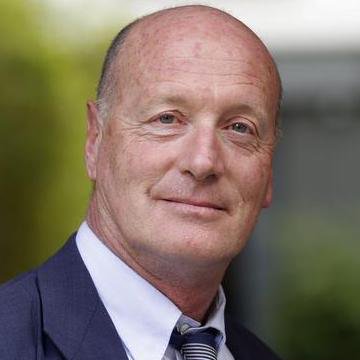Vladimir Putin has just accepted Emmanuel Macron’s invitation to attend a summit on Ukraine in Paris in “Normandy format”.
Invented by President Holland on June 6 2014, on the occasion of the ceremonies marking the 70th anniversary of the Allied landings in Normandy, this format includes the leaders of four countries: France, Germany, Russia and Ukraine.
This informal structure remains today the only institution capable of one day resolving the conflict between these two sister nations, Slavic and Orthodox, whose histories are closely intertwined, and who had never fought each other before 2014.
Russia was born in Kiev at the end of the ninth century AD, with Oleg the Wise. In the 16th century, the centre of Slavic Orthodox power moved to Moscow, where Ivan the Terrible became the first Russian tsar, ruling from 1547 to 1584. Russia was gradually taking the form of a centralised state, while Ukrainian territory remained prey to rivalries between Atamans or Cossack leaders.
In 1654, the Zaporogu Cossacks, established on the banks of the Dnieper, “beyond the rapids” (hence their name), rose up against the Republic of the Two Nations (Poland and Lithuania). Led by the Ataman Khmelnytsky, they placed themselves under the protection of Tsar Alexis I of Russia, through the Treaty of Pereïaslav. The Polonization of the Ukrainian elites was followed by their Russification.
In the 1930s, Ukraine suffered a major famine due to “de-kulakization” (destruction by the Stalinist regime of the properties of rich peasants and artisans). The Moscow communist system did not, however, ostracize the Ukrainians.
The Ukrainian Nikita Khrushchev led the USSR from 1953 to 1964 and the Ukrainian Leonid Brezhnev from 1964 to 1982. The two nations are then inextricably linked. In the 1980s, a Frenchman visiting Kiev thought he was in Russia.
In 1954, to celebrate with dignity the three hundredth anniversary of Ukraine’s accession to Russia, Khrushchev decided to give Crimea to the Ukrainian Soviet Socialist Republic. This administrative measure did not change the lives of the inhabitants of Crimea, the majority of whom feel Russian.
The two nations split in 1991, when Russian President Boris Yeltsin and Ukrainian President Leonid Kravchuk agreed to dismantle the USSR. It was a deal that benefited both: Yeltsin got rid of Gorbachev by stripping all power from his position as president of the USSR, and Kravchuk became the president of an independent state, recognized by Russia and by all the nations of the world.
Relations between the two nations remained excellent until 2004. In November 2004, an “orange revolution” broke out in Kiev against the election – perceived as rigged – of a Pro-Russian president. Ukrainian society was then divided between pro-Western and pro-Russian. In 2010, it elected a Pro-Russian president.
In December 2013, the pendulum seemed to be swinging back towards the pro-Western side, with the outbreak of the Mayan revolution, fuelled by citizens upset at the presidential decision to renounce, under pressure from Moscow, a trade association treaty with the European Union.
The pro-Western Ukrainian opposition signed a political agreement with the pro-Russian president on 21 February 2014, sponsored by France, Germany and Poland. But, under pressure from the United States, the next day it refused to sign the treaty and had the Rada (the Kiev Parliament) dismiss the president.
The Russians clamoured against the coup d’état, and took revenge by annexing the Crimea (for fear that the port of Sevastopol would be given to NATO), after a referendum they won hands down; the population felt Russian. Not a drop of blood flowed between Russian and Ukrainian soldiers.
Things worsened in the spring of 2014, when pro-Russian rebels tried to seize the Donbass, a Russian-speaking province in eastern Ukraine. Kiev dispatched its army to the region. As Kiev tried to quell the rebellion, the rebels were receiving clandestine aid from the Russian army in August 2014.
The Ukrainian army was defeated a second time in January 2015. Blood has been spilled. More than 10,000 dead. Sporadic conflict, frozen conflict.
The election of a new President of Ukraine in April 2019 changes the situation. Zelensky wants peace and Putin wants the end of European sanctions. Everyone knows the only deal acceptable to both parties: a general amnesty, cultural autonomy for the Donbass, deployment of Ukrainian border guards.
The only unknown that remains is whether Macron and Merkel will be able to persuade their two Slavic interlocutors of the urgency of this deal, a deal which serves the interests of both Russia and Ukraine.
This article was first published in Le Figaro.





